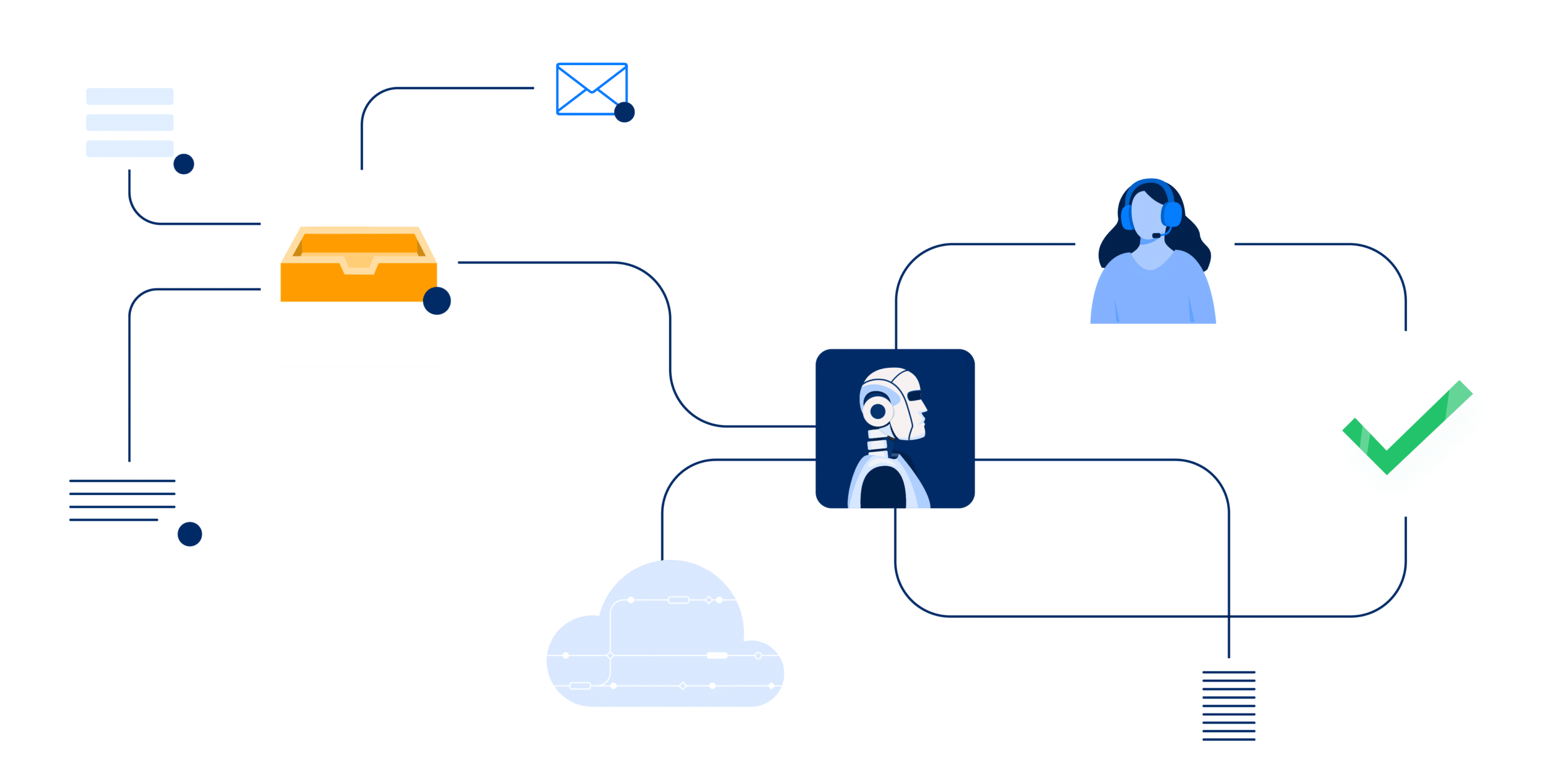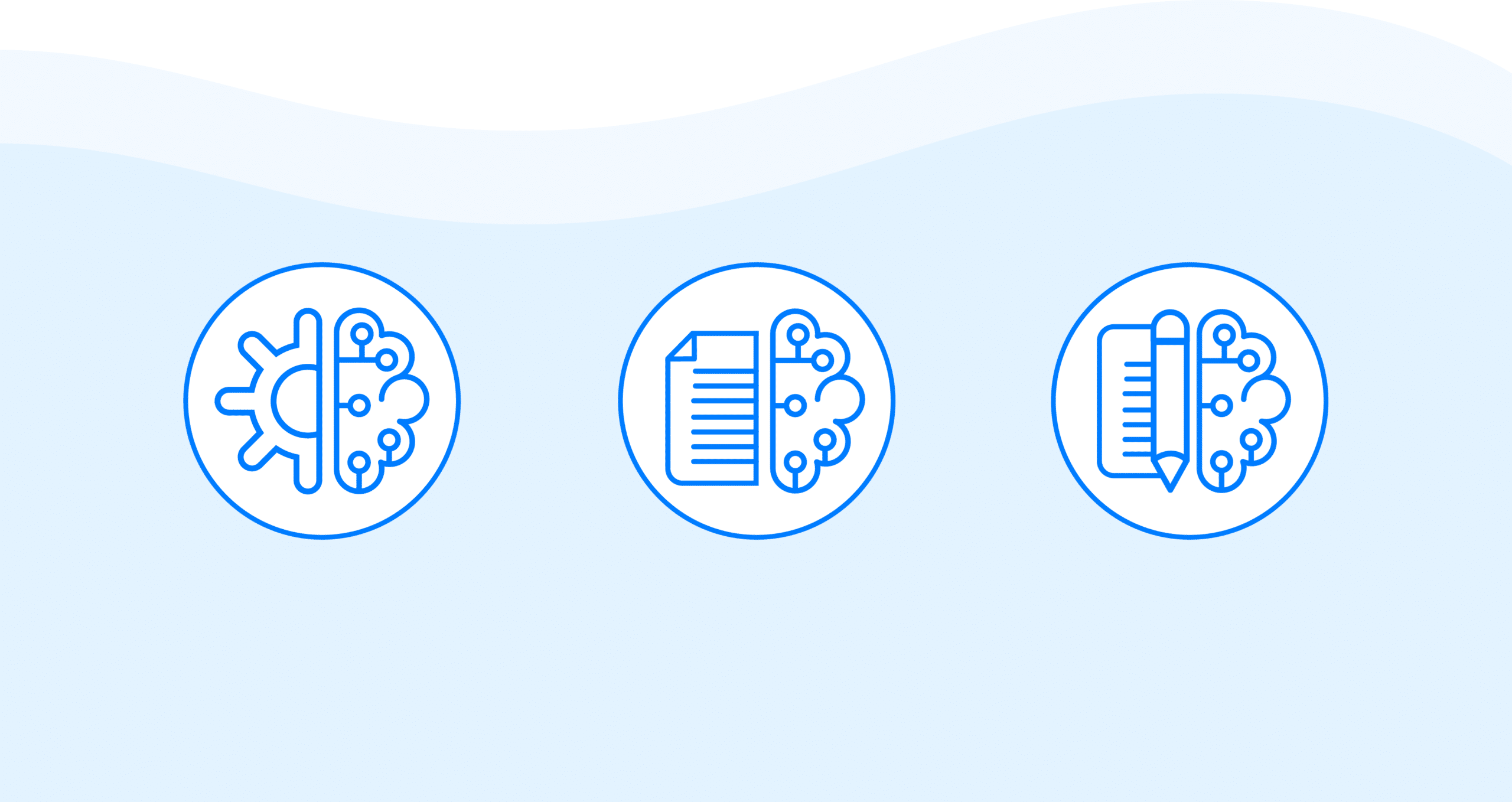When it comes to AI in the workplace, the possibilities are endless. AI can accomplish so much, it’s difficult to get a detailed idea of what it can do for your team.
But every business has customers, and every business has to find a way to support them.
AI-driven support automation offers businesses a unique opportunity to lower expenses, raise satisfaction, and leverage new technology.
Read on to learn more about the 3 types of support automation and how AI in the workplace can improve business outcomes.
#1: Self-Service
Customer demands keep rising, and teams often lack the bandwidth to offer prompt support.
To save both customers and teams valuable time, self-service uses AI to answer low-level inquiries within seconds. Most often, this happens through a chatbot, a support site, or a phone menu.
Self-service can work internally, too. Employees often have the same questions and concerns, from requesting PTO to resetting passwords. With internal self-service, employees can resolve these issues on their own—without distracting a team member.
Plus, self-service is an increasingly popular option among consumers. Over 50% of customers use chatbots and support portals, and most Gen X, Millennial, and Gen Z consumers prefer self-service to other alternatives.
AI in the workplace offers companies the opportunity to elevate their support strategy while reducing costs, increasing team productivity, and ensuring customer satisfaction.
#2: Agent Assist
Without a happy, talented team, it’s nearly impossible to achieve our business goals. Agent Assist technology empowers teams with AI-driven support, saving time and ultimately improving business outcomes.
Agent Assist performs repetitive tasks on behalf of employees, usually inside helpdesks, databases, or systems of record. It uses different types of AI in the workplace to make time-consuming tasks more straightforward and efficient.
In practice, this might look like:
- Email response suggestions, action item creation, or summarization
- 90%+ transcription accuracy over voice
- Full interaction history when customers connect with an agent
All these tools empower team members with the information they need to work efficiently—reducing mistakes or delays and creating better customer experiences.
#3: Workflows & Automations
Similar to the two previous types of AI in the workplace, backend automation gives even more time back to teams. Robotic process automation performs painstaking or time-consuming processes on behalf of employees.
These workflows and automations often run independently, in the background. Businesses can fully customize these processes using a variety of factors:
- If/then conditions, which use specific parameters to kickstart an automated process
- Action triggers, which use actions such as clicks or opens as a signal to run
- Scheduled automations, which run on certain defined times and dates
With integrations, workflows and automations can also function across multiple systems and third-party apps. This allows teams to automate even more complex processes and work more smoothly.
Ready to try AI in the workplace?
To stay relevant in a rapidly changing market, it’s crucial that business leaders fully understand how to innovate. Discover key insights, trends, and tips for using AI at work with our new guidebook, The State of Support Automation.

The Guide to Support Automation
Discover:
- The different types of AI
- A framework for applying support automation
- Tips for choosing solutions


